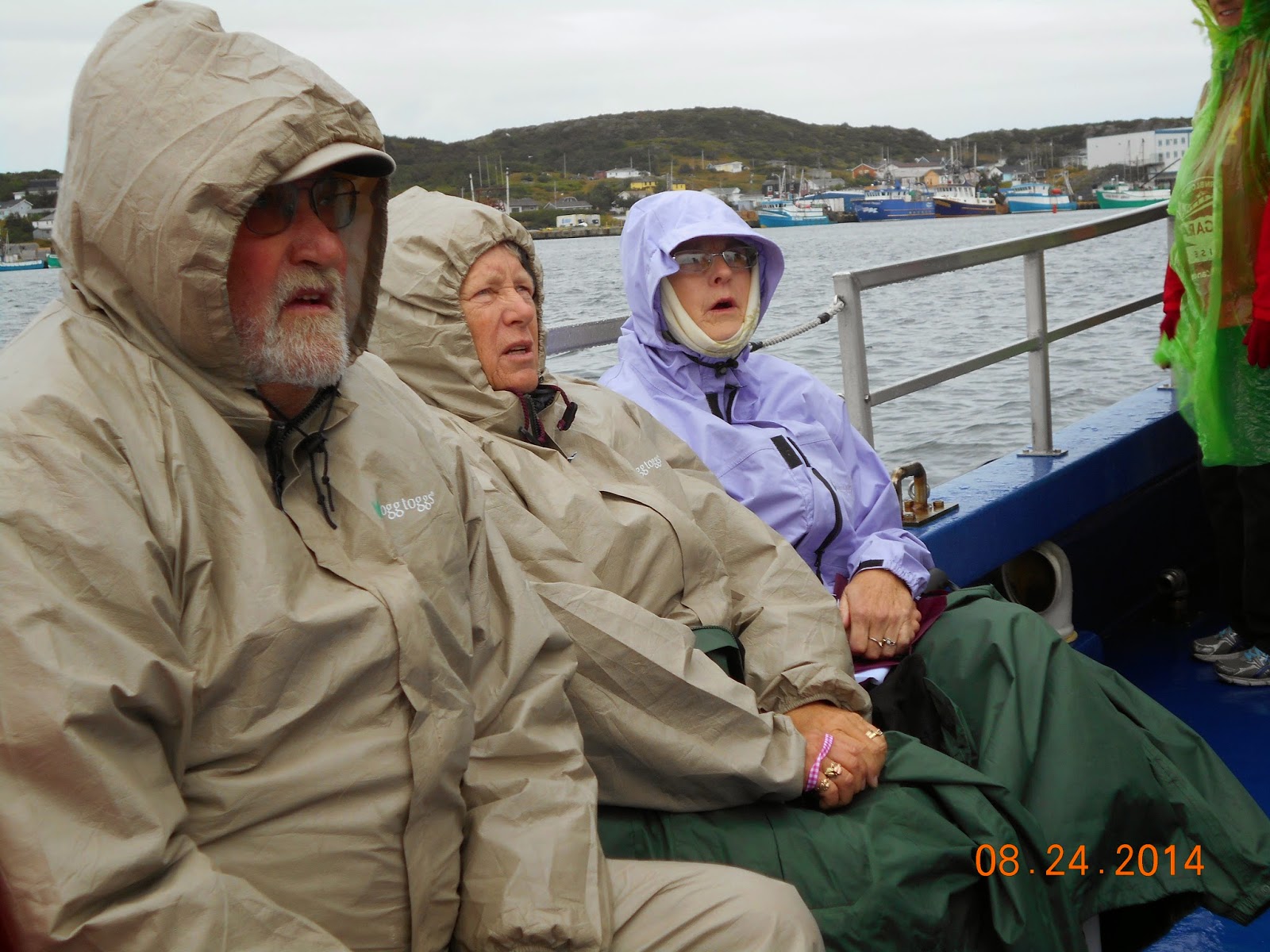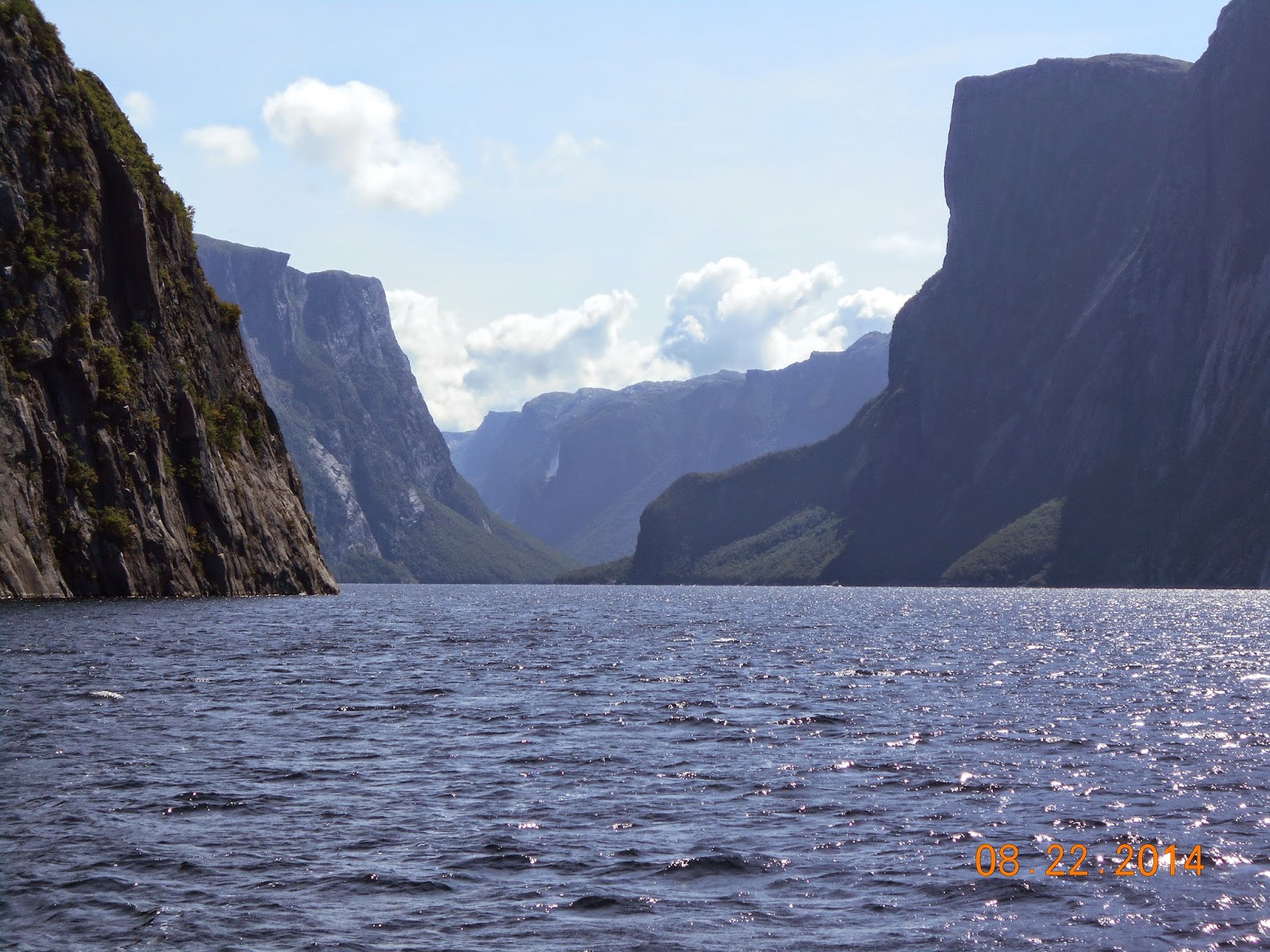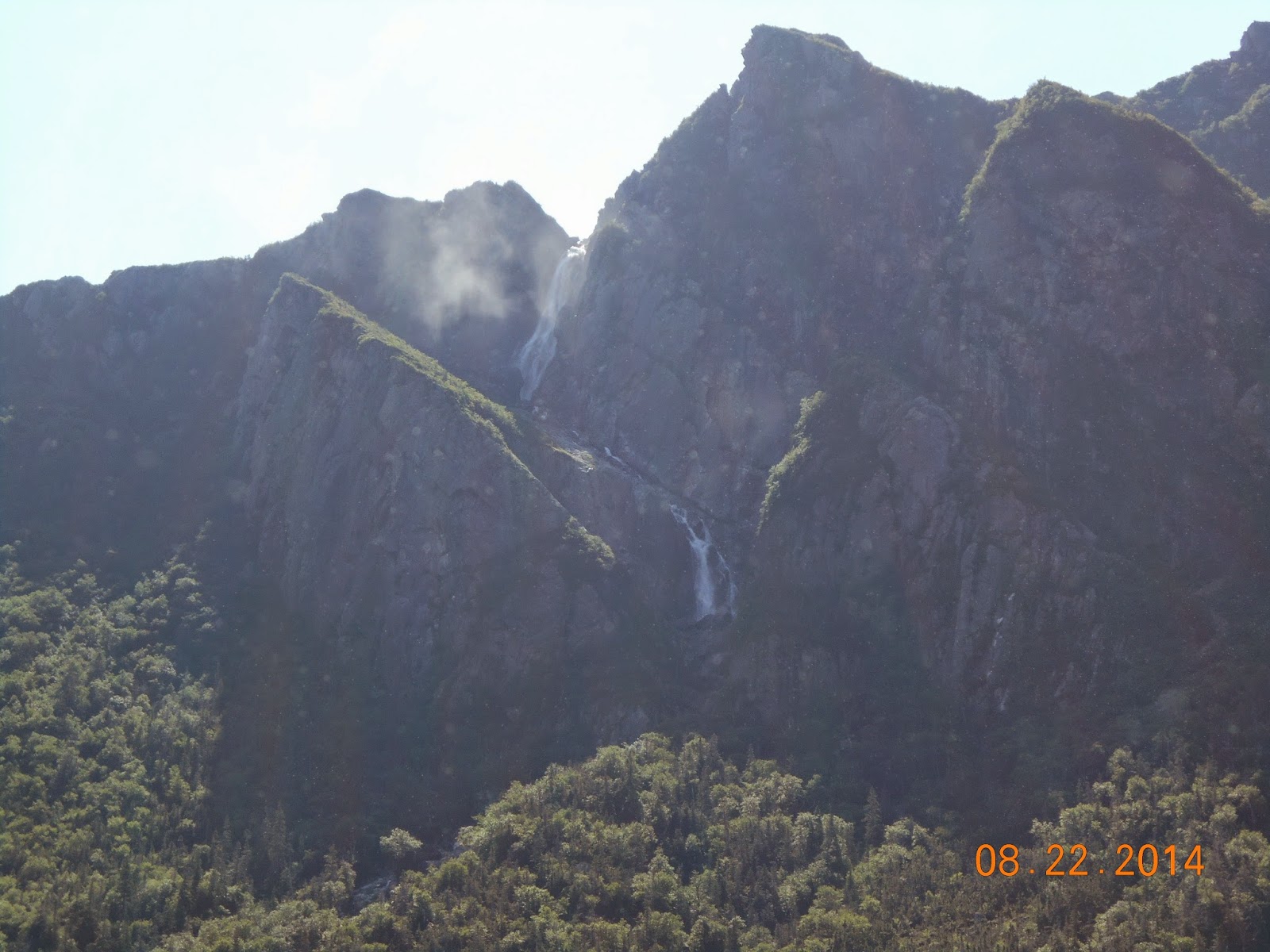When
Jacques Cartier saw “New-Found-Land” in 1534, he said it was “The land God gave
to Cain” because of the harsh, unforgiving nature of the desolate land. This is
one of the many pictures we took in the Gros Morne National Park on the
northward extending arm of NL along the west side of the island. It is
spectacular, very rugged and remote, and "harsh...desolate land." The name “Gros Morne” means large, isolated
mountain. The namesake mountain is a unique geological mountain composed of
some of the oldest rocks in the world.
We
are in Deer Lake, NL, south of Gros Morne, and we are heading back. This is
Friday; on Sunday we catch the ferry back to the mainland, Nova Scotia. We will
have spent 21 days on NL with one of those days being mostly spent in Labrador.
It is Day 48, and tomorrow we move further south on the island to better position
us to catch the shorter ferry ride back to NS.
After
our mind-boggling encounter with the Root Cellar Capital of the World, we
thought things just couldn’t get any better. But they did. We drove in, at
times, heavy rain from Twillingate on the east coast of NL to Rocky Harbor on
the western coast and then northward up the arm of NL to the very northern tip of
NL at St. Anthony.
One
of the highlights of the stay at St. Anthony, even better than root cellars, was the whale watching cruise. A
cruise that started in the rain and ended in the rain, but when we found whales,
the rain had stopped. It seems with rain come wind and rough seas. The boat
pitched and yawed and at times the yaws were more like pitches. I did not get any
photos of the whales because I was on the upper-most deck holding on for dear
life. If I had let go of the railing to handle my camera, I would have been
some of the jetsam, or is it flotsam, one sees in the ocean.
It
was a successful cruise despite the conditions trying to match the spirit of what
Cartier said in 1534. At times we had dolphins providing escort for our boat as
they leaped alongside and swam across the bow. But the real stars were two
humpback whales, feeding tight against the rocky shore and in the small coves
that dotted the shoreline we followed. The whales were pushing fish close to
the rocks in an effort to herd them to a place where the whales were more
efficient in their feeding. We saw numerous spouts when the whales surfaced
followed by backs as they arched back into the water. We were also treated to
an occasional tail coming out of the water as well as pectoral fins. A
successful whale watching tour indeed, but then the rains came again and we
hightailed it back to where we started from believing that there may have been
some truth in what Cartier said about Newfoundland.
We
took two boat trips under much more pleasant conditions when we visited the
Gros Morne area.
One
was a boat tour around Bonnie Bay, a large bay at Gros Morne that opens into
the Gulf of St. Lawrence. We went by a number of small communities that dotted
the bay, was serenaded with NL music, and saw lots of bald eagles in nests and
in trees, mature adults and ones that had not yet developed the white heads.
We
also hiked about a mile and a half into the park to a lake that had been a
fjord at one time. It is a long narrow water way into the mountains, and at one
time was filled with sea water. Over time the mouth became silted up, and the
body of water was cut off from the ocean. It is now a fresh water lake but
retains the shape and characteristics of a fjord.
Since
the lake was created by glaciers, there were lots of hanging valleys along the
sides that contributed a number of spectacular waterfalls.
At
St. Anthony, which is about as far north on NL that one can get and have dry
feet, in addition to the whale watching cruise, the other highlight was a visit
to the only documented Norseman (okay, Viking) site in North America. This, of
course, does not include the rune stone in the Alexandria, MN area. But I’m
trying to write a serious blog here… Anaway, the site was run by Parks Canada, and
we had a guide that told us the story of how the site was found, provided a
discussion of the evidence that has convinced most folks that the site was
settled by Norse, and talked about what experts say about the Norse presence in
North America. The site is believed to have been occupied for less than 10
years and was never meant to be a settlement but a way station for the Norse as
they explored further south. And this was probably not “Vinland” since no
grapes grew in NL, but grapes did grow in New Brunswick leading to speculation
that the Norse got a lot further south than NL. They also found butternuts on
the site in NL, and again the closest butternut trees grew in New Brunswick.
Interesting stuff. Oh, and they had a reconstructed Norse site with costumed
presenters. Standard stuff for Parks Canada.
Before
we headed too far south in NL, we did do a day trip to Labrador. The little we
actually saw in the limited time we had pretty much matched the countryside and
life style found in NL. Actually, NL and Labrador is one province.
The most
interesting aspect of the visit for me was learning that Basque whalers came to
Labrador in the mid 1500’s and established a whaling station there. They would
sail all the way from Spain, hunt right whales for 2-4 months, process them for
their oil, and return before winter set in with ships loaded down with barrels
of whale oil. Fascinating country and fascinating history.
Onward,
southward tomorrow. Next Wednesday we ride the tidal bore in the Bay of Fundy.
It will be a muddy good time, or so I’m told. The following Sunday, then, we
will be back in Maine, and we are betting that Maine is gonna look mighty good.










No comments:
Post a Comment